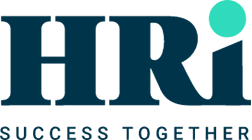Latest from HRi
How AI is reshaping HR
Artificial Intelligence (AI) is when machines are simulated to think and function as humans. Machines, especially computer systems are becoming smarter. They can process large amounts of data without human intervention. HR has always held large volumes of data. But HR has not always processed or analysed the data to improve operations.
HR gets a makeover every few years. This can be driven by several factors including technology and innovation. Technology is heavily driving the changing nature of the workplace. The pandemic forced many organisations to bring forward technological advancement. Changes in the working environment were also forced to be made. Remote and hybrid working has become the new norm for many organisations. It presents a fantastic opportunity to HR. It is time for HR to be innovative and put people at the heart of organisations again.
AI is helping to improve the employee lifecycle and working life
HR can use AI to improve all aspects of the employee lifecycle and working life. This starts from the onset of the journey with recruitment and attraction of talent. If used correctly, AI can help recruitment processes and help eliminate biases. Also, reducing discrimination and increase diversity. However, just like human biases, AI can also present biases. For example, a particular group of people can be disadvantaged by the recruitment process in the same way as they would have been if humans did the recruitment.
AI can give HR insights into the training needs of their workforce. HR can use the information and work with organisational leaders and management to deliver the right training for them. This helps to bridge the gaps in knowledge and skills. The insights can also be used in future predictions. Such as, where there might be skills shortages and challenges in the workforce. With AI, HR can work very closely with other departments, by closely analysing data form various parts of the organisation. This can be particularly useful when considering new projects. AI can help give clear insights on how this will impact on other areas of the business.
AI makes workforce planning, cross functional working, knowledge sharing and collaboration easier. HR and organisational leaders will be able to easily spot several things. Such as who has what skills, experience etc within the business. Also, who worked on what project, who might be more suited to an upcoming project and so on. Most organisations struggle to pull together skills matrix and to keep them up to date. With AI, it will be easier to maintain skills matrix in an organisation, helping managers to make informed decisions.
AI and Organisational Culture
Underpinning successful organisations are good culture, good people and great leadership. Most businesses have macro as well as micro cultures. Depending on how varied the differences are, these can lead to toxic working environments and an us-versus-them situation. Typically, a section of people may feel they are unfairly treated compared to others. They then become unhappy, disengaged and unproductive as a result. With AI, HR can get a better understanding of the organisational culture and sub-cultures by gathering data. Such as, employee engagement surveys, staff forums, exit interviews, and onboarding processes. HR will then be able to conduct detailed and analysis of different data and meta data. Identifying trends and patterns over a period to understand what the genuine issues are.
Securing leadership and management buy-in will be more straightforward. As HR will be in a better position to back their proposals with facts, figures and analysis and trends. With AI, HR may be able to conduct simulations, showing several scenarios and the various possible outcomes.

AI and HR Processes
AI can also help HR streamline processes, including disciplinary and grievance. Data about cases can be analysed into finer details. AI will make it easier to check timelines and analyse data gathered during investigations. Qualitative data gathered through interviews can be analysed alongside other relevant data.
Reporting will also generally be easier with AI. It will be easier to report on all aspects of HR – salary, gender pay gap, diversity, absenteeism and skills gaps. HR will need to continue to ensure that the data is of decent quality, up-to-date and dependable. AI will also make it easier for HR to cleanse data when the data is no longer required. This helps them to remain compliant with Data protection and GDPR regulations.
AI can support background checks, using approved digital services to validate employment history and documentation. This will ensure that employees are who they say they are, have the correct right to work documentation and qualifications. The right AI system will make it difficult for people to falsify documentation and evidence. Digital identity, voice and facial recognition software means it is harder to impersonate others.
With AI, HR can focus on adding value to their organisations by identifying which areas needs prioritising. Aligning HR goals and strategy with the business goals and strategy will be much easier. Demonstrating return on investments on HR initiatives will also be much easier. More importantly, HR will be able to show how bad decisions are negatively impacting the employees. Equally, they will be able to show how good decisions and initiatives are affecting employees.
AI can erode trust and goodwill
HR and business leaders need to be mindful that over reliance on AI can erode trust and good will. For example, if an organisation relies heavily on the use of AI to track employee activities, the workforce will feel like big brother is always watching. They can become nervous, and it can become counterproductive. Employees may become self and time conscious. They are less likely to go over and above duty if they believe they will be penalised for taking a bit of time away from their workstations.
HR can show through AI that most good HR practises are key and integral rather than nice fluffy HR stuff. This includes looking after your employees, creating a good working environment, following fair processes, treating employees equally etc.
AI and Employee Benefits
HR will be able to get better insights into what benefits employees value the most. Sometimes, organisations in the same industry provide similar benefits just because that is what others are providing. Not because that is what most of the employees’ value or use. With AI, HR will be able to choose which benefits are valued and use by their employees. They might even be able to offer a selection of benefits, where employees can select which benefits, they sign up for. The employer and HR will be able to offer benefit packages of the same financial value to the relevant employees. Some organisations are already starting to do this for their employees.
AI can therefore be extremely useful to HR. Not only does it enable HR to add the human touch to human resources. But it also empowers HR to make informed decisions. Furthermore, HR can also present sound business proposals.
Author: Mary Asante, Director | HRi
